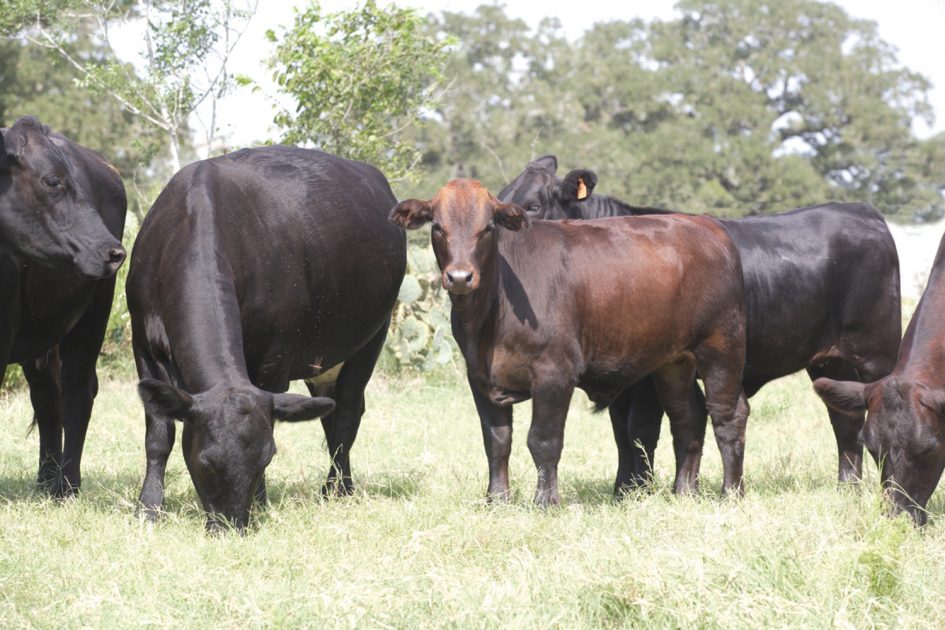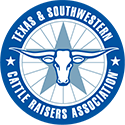Reproductive Disease Prevention

By Kristin Lewis Hawkins
Keeping cattle healthy is one of the top priorities of cattle producers. A healthy herd is a productive herd, and this is best maintained through vigilance, following a herd health plan and Beef Quality Assurance Program guidelines.
Illness and injury in cattle can be relatively easy to recognize: individuals not eating, a loss of body condition, droopy appearance or lameness can indicate something is wrong. However, reproductive diseases aren’t so obvious. Usually, the symptoms go unnoticed until conception and birth rates drop, with fewer calves hitting the ground. Cows can otherwise seem healthy, but come open after you were sure they had been bred. By the time you suspect there’s a problem, you could be well on your way to a wreck. The time and cost of solving a problem already well underway can be much greater than preventing that problem in the first place. Put resources to work on a proactive plan to stop a reproductive disease before it hits your herd and know what signs to look for in case one slips past your defenses.
Follow a herd health plan
Utilizing a herd health plan is the best road map a producer can use to make sure he or she stays on track. Problems are easier to spot and correct. By knowing what to expect, and when, you’re saving time and money, two of the most limited resources on the ranch.
A health plan can be as detailed as you want to make it, but it should at least include an outline of breeding, calving, weaning and marketing seasons and general dates of working cattle and implementation of vaccination programs. By having dates and guidelines for these activities, producers are better prepared for the likelihood of surprises down the road.
One of the most important factors in a successful herd health plan is the involvement of your large animal veterinarian. Discuss the areas where your operation may need attention and what benchmarks you should set for your health program, as well as proper protocols to follow when problems arise. By developing a plan and ironing out a calendar that benefits your needs, you are better prepared to improve efficiencies and handle surprises, issues and illness.
Defined breeding season
One of the best indicators of a silent profit killer within your herd is open cows that shouldn’t be open. Either they conceived and aborted the fetus or the cow couldn’t conceive due to an infection or other problem. Either way, open cows are profit robbers. Cows and heifers need to produce calves to earn their keep.
By following a defined breeding season open cows are easier to spot, especially after they were exposed to bulls. Some reproductive infections will cause a cow to abort, which could result in a cow coming into estrus and being bred again. A herd without a defined breeding season will keep this cycle going, often unnoticed. However, many open cows after breeding is a big warning sign that you have a problem. Limit your breeding season and made decisions about what to do with open cows.
Reproductive diseases important to cattle producers
Reproductive pathogens can include a virus, bacteria or protozoa.
Bovine Viral Disease (BVD) is a viral disease of cattle that can be a very costly cause of reproductive problems in the herd, including fetus reabsorption, abortion, stillbirth and the live birth of persistently infected (PI) calves. Calves born to infected females will continue to shed the virus and infect susceptible animals, even if they don’t appear sick themselves.
Transient infections include diarrhea, calf pneumonia, decreased milk production, reproductive disorders, increased occurrence of other diseases, and death. Losses from fetal infection include abortions; congenital defects; weak and abnormally small calves; unthrifty, persistently infected (PI) animals; and death among PI animals.
Preventing BVD from infecting your herd involves proper quarantine and biosecurity protocols of new animals and a vaccination program. Consult your veterinarian for more information, including the testing of animals and how to make sure you don’t already have an unseen problem.
Infectious Bovine Rhinotracheitis (IBR) is a highly contagious respiratory disease caused by bovine herpesvirus type 1 (BHV-1), which affects the respiratory tract and reproductive system of cattle. Prevention of IBR is based on preventing the virus from entering the herd using good biosecurity and quarantine protocols and a vaccination program.
Leptospirosis is a bacterial infection transmitted either directly between animals or indirectly through the environment by Leptospira hardjo-bovis. The losses associated with leptospirosis infection include early embryonic deaths, low pregnancy rates, abortions, stillbirths, weak calves and calf deaths. Prevention includes vaccination and reducing the risk of infection with proper biosecurity and quarantine protocols.
Trichomoniasis, or trich, is caused by the Tritrichomonas foetus protozoa. It is one of the costliest reproductive diseases in cattle production.
Infected bulls carry the organism on their penis and prepuce, thus infecting cows through breeding. Infected cows may abort early in the pregnancy and become temporarily infertile. Only testing will confirm the presence or absence of the disease, and successive negative tests are recommended for proving its absence.
Trich infections often go undetected, especially in herds without a defined breeding season. Trich-infected cows conceive, but due to an inflammation response in the reproductive tract, can’t maintain the pregnancy and return to estrus after embryonic death and/or abortion. Calving rate drops in the second year after a herd has been infected with the trichomonas organism.
The best way to prevent introducing trich into your herd is with thorough testing of bulls, especially new bulls introduced into the herd, no matter their age. To properly prevent the accidental introduction of trich, it is recommended to test bulls before breeding season begins and after the season is completed. By also testing bulls at the end of the breeding season, you can be assured your bull wasn’t infected by newly-introduced females, wandering neighbor animals or other accidental exposure.
Ranchers are encouraged to visit trichconsult.org to learn if their herd is susceptible to trichomoniasis due to factors such as location and herd density. The site will also help producers develop a plan to reduce or avoid trichomoniasis in the herd.
The Texas Animal Health Commission (TAHC) recently sought input from all segments of the cattle industry affected by trich. In 2009, the Texas cattle industry requested TAHC establish a regulatory program to address the disease. The TAHC formed the Bovine Trichomoniasis Working Group, which meets at least annually to evaluate the program and make recommendations to TAHC for regulatory changes.
Since its formation in 2009, the group has discussed the role that female cattle play in the maintenance and transmission of the disease. This year, the group considered recommendations to TAHC regarding potential regulatory changes to address this risk. This is an important development in the trich program because Texas’ rules to date have focused on bulls only.
While it is commonly stated that most cows and heifers will clear a trich infection with 120 or more days of sexual rest, the group recognized the detrimental impact of females not clearing the infection and potentially spreading the disease. In making its recommendations, the group considered the lack of a reliable trich test for females and recognized the critical role producer and veterinary education and outreach plays in the success of a disease control program.
The 2017 TAHC Bovine Trichomoniasis Working Group recommendations were:
- Restrict female cattle in trich-positive herds for the time that herd bulls are under quarantine. TAHC field staff and epidemiologists shall review individual cases to determine which cows and heifers should be restricted.
- Development of educational materials focusing on the role cows and heifers play in maintenance of the disease within a herd, and in spreading the disease to bulls in other herds if moved or sold for breeding. The group understands that restricting the movement of females only while bulls are quarantined will not prevent infected females from spreading the disease once that quarantine is released. However, the group recognized that limiting female restrictions to the length of the bull’s quarantine is a manageable first step that emphasizes the role female cattle play in controlling the disease in Texas.
The comment period on these recommendations closed Oct. 1, 2017. Further information on proposed rule changes or additions will be publicized as they are announced. No rule changes have been made yet, but knowing what the working group has in mind for future changes could give ranchers an idea of what could happen in the future and what mechanisms of transmission are still causing problems for producers.
Get ahead of reproductive diseases with vigilance, a thorough herd health plan, communication with your veterinarian and good biosecurity and quarantine protocols. By keeping an eye on your operation, you’re also watching your bottom line. ❚
Dr. John Davidson, Boehringer-Ingelheim Vetmedica Inc., spoke on reproductive diseases and prevention at TSCRA’s 2017 Cattle Raisers Convention. He offered important guidelines to keep in mind when considering improving your operation’s reproductive bottom line.
- Heifers should get a breeding soundness exam and be vaccinated for bovine viral diarrhea (BVD) at 1 year of age.
- Bulls should be tested for trichomoniasis and get a breeding soundness exam.
- BVD and infectious bovine rhinotracheitis (IBR) are preventable with vaccines.
- Meet with a veterinarian and develop a herd health calendar and plan.
“Wandering Bull” is excerpted from the October 2017 issue of The Cattleman magazine.


